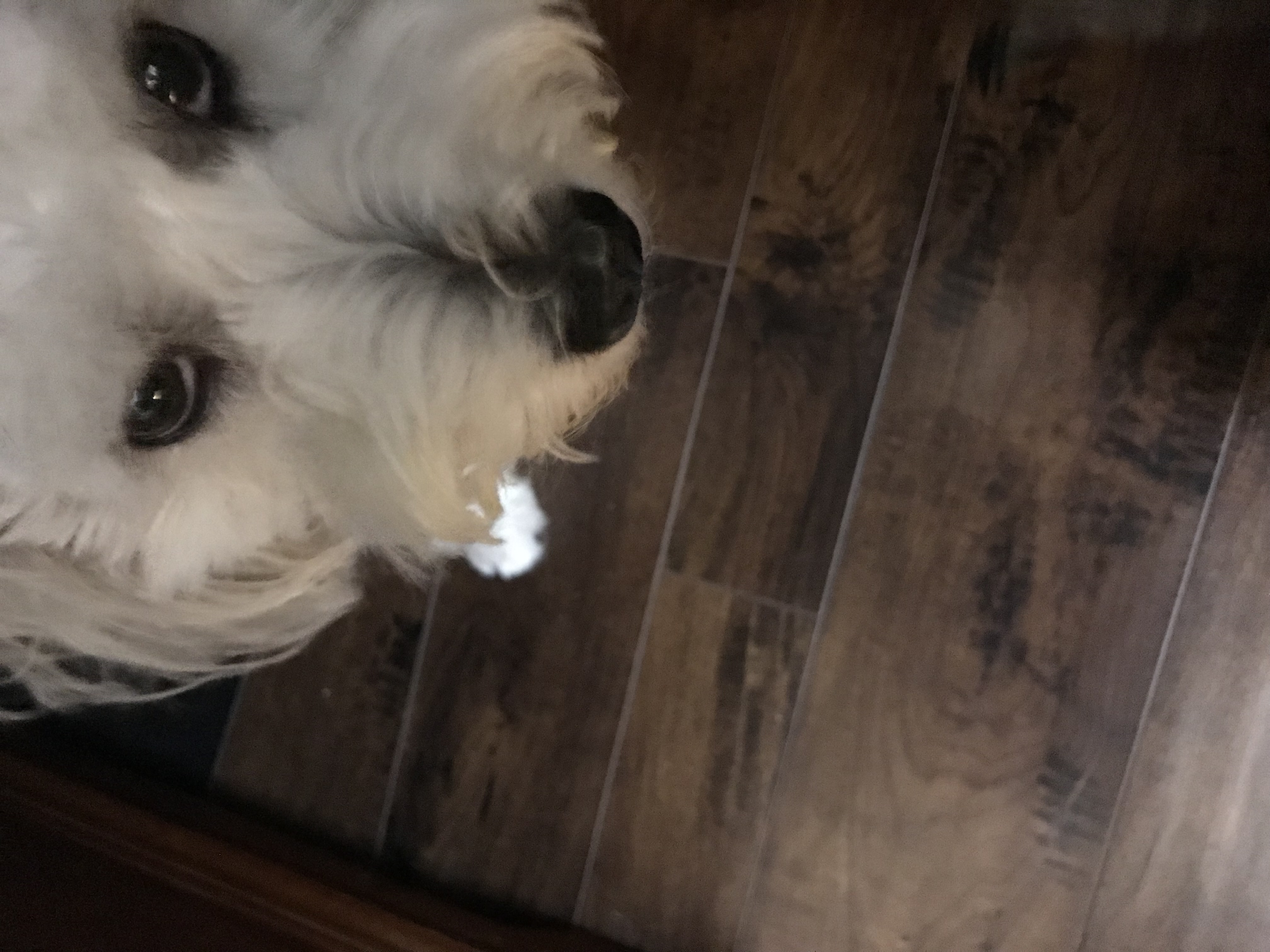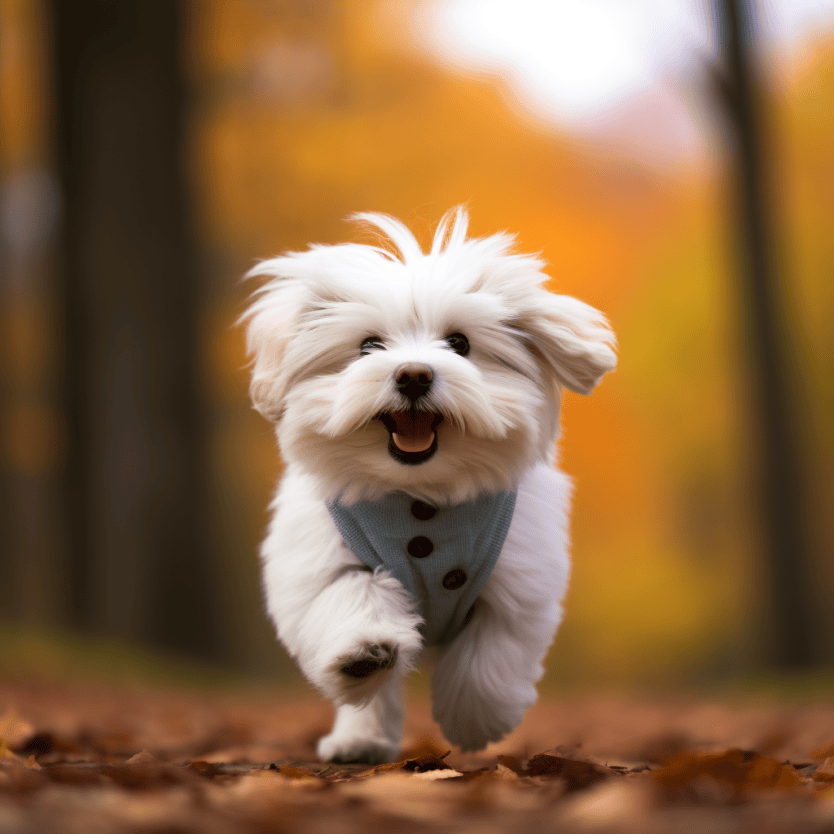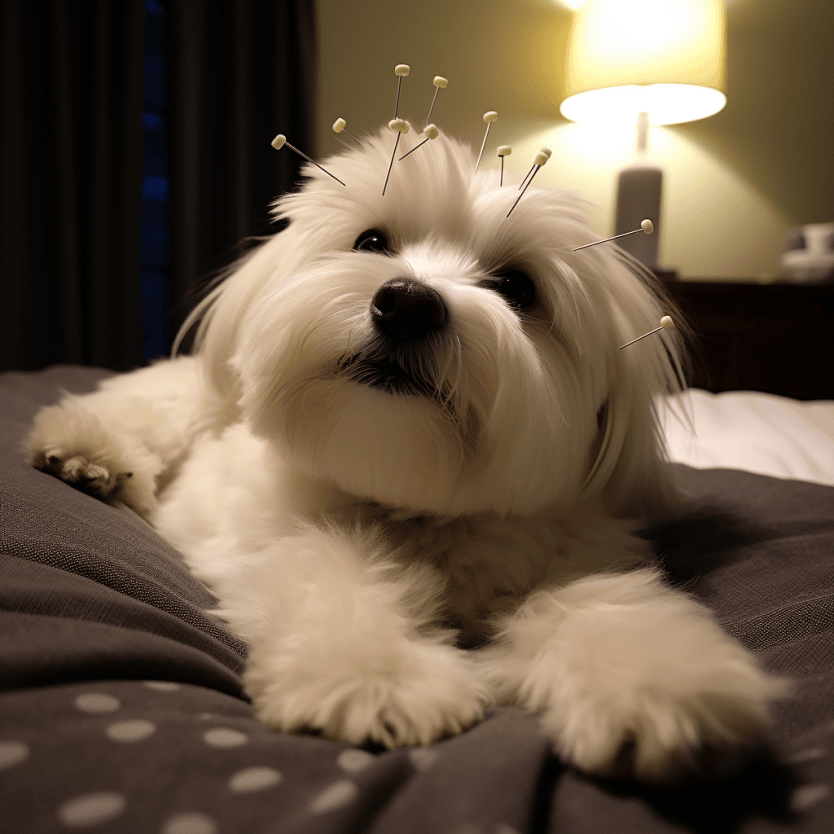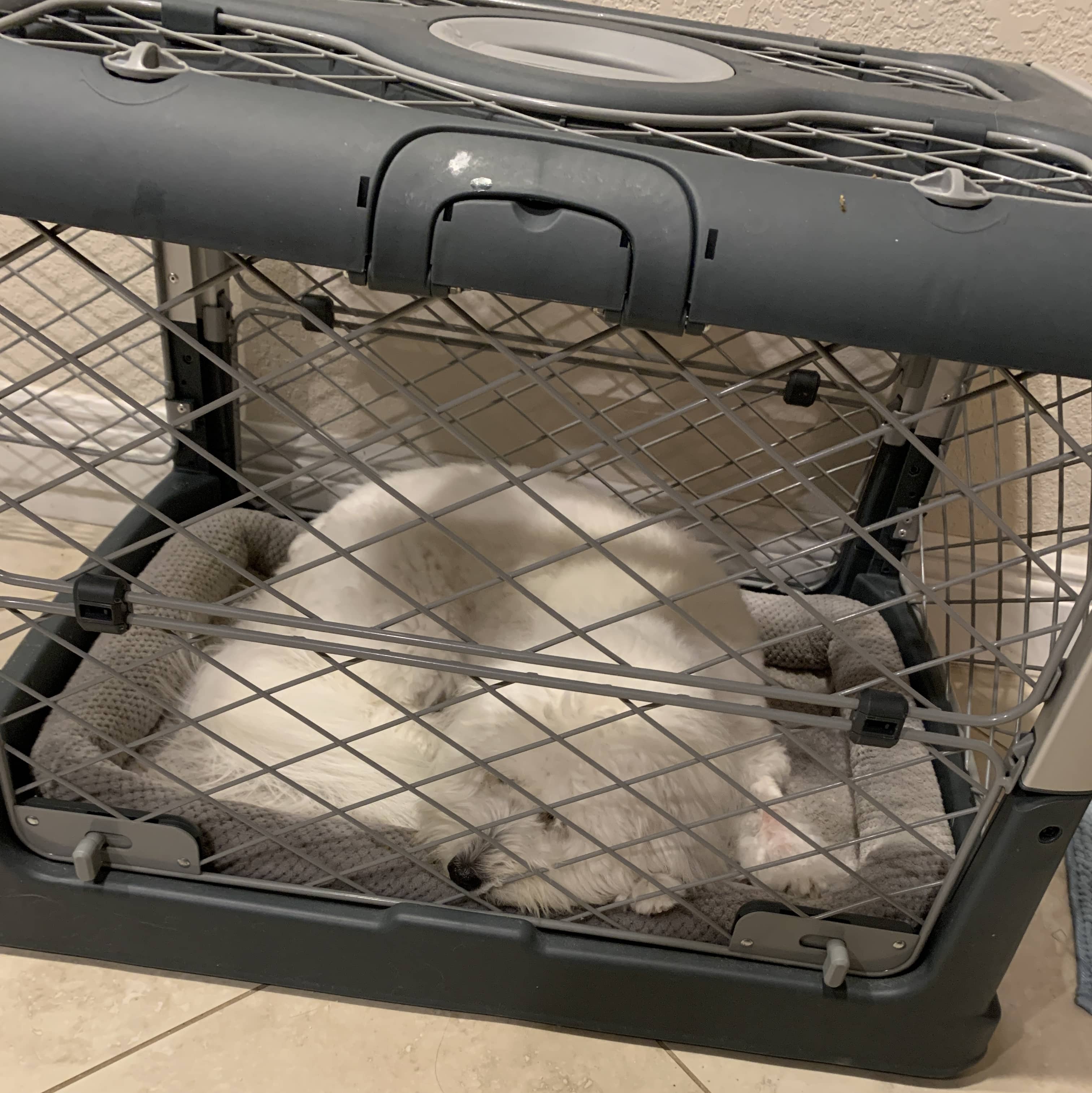Proven Aids for Calming a Dog with Anxiety

As an Amazon Associate, I earn from qualifying purchases which allows me to run this site and provide in-depth content at no extra cost to you.
Calming a dog with anxiety can be quite a challenge, and there are certain times when it becomes even more daunting. Take, for example, July 4th here in the US – it's a whole different ball game! All dog owners have a love-hate relationship with fireworks and holidays. It’s so much fun - for us humans. But it’s horrible to watch your dog suffer with fear. And the good news is that there’s no need for suffering.
I’m fortunate that Lucy’s breeder used the Puppy Culture program to desensitize her to loud noises, so she rarely gets stressed during fireworks or other loud noises. But that doesn’t mean she doesn’t have anxiety. Ever since her seizures started, there have been plenty of other things that stress her out. And because stress can bring on seizures, it’s my job to keep her as calm as possible.
When does your dog get anxious?
Situations like thunderstorms, car rides, vet visits, grooming visits, being left alone, doorbells, and even vacuum cleaning can cause anxiety for your dog.
Dogs like the Coton de Tulear are sensitive and can be prone to anxiety. But the good news is that there are ways to prepare for these kinds of events to ensure your dog feels safe and calm.
There are many different types of calming aids available for dogs, including supplements, treats, and other products. However, it's essential to choose safe options that won't cause harm to your pet. Some calming aids may contain ingredients that could harm dogs, so it's important to do your research and choose safe and effective products.

Recognizing Signs of Stress in Dogs
Before calming a dog with anxiety, it's important to recognize the signs of distress in your dog. Anxiety in dogs can manifest in various ways, including separation anxiety, fear of loud noises, and stress in new environments. Some common symptoms of anxiety in dogs include:
· Panting
· Pacing
· Destructive behavior
· Hyperactivity
· Whining
· Trembling
· Fear of loud noises
Causes of Anxiety in Dogs
Understanding the cause of anxiety is the first step in finding a safe, calming aid for dogs. Here are some common causes of anxiety in dogs:
Fear: Dogs can become anxious due to fear of loud noises, strange people or animals, visual stimuli like hats or umbrellas, and unfamiliar surroundings. Fear-related anxiety can cause a fight, flight, or freeze response in dogs.
Separation: Dogs are social animals and can become anxious when separated from their owners or other pets. This is especially true for breeds like the Coton de Tulear. Separation anxiety can cause destructive behavior, excessive barking, and other behavioral issues.
Aging: As dogs age, they may experience anxiety due to cognitive dysfunction syndrome (CDS). CDS can cause confusion, disorientation, and changes in behavior, including anxiety.
Stressful Situations: Dogs can become anxious when exposed to stressful situations such as thunderstorms, fireworks, travel, car rides, and vet visits. These situations can trigger a fear response in dogs, leading to anxiety.
Routine Changes: Dogs thrive on routine, and any changes can cause anxiety. For example, moving to a new home, a new family member, or a change in the owner's work schedule can cause stress in dogs.
Health Issues: According to an article on Psychology Today, when dogs are anxious, it can actually increase the levels of stress hormones in their bodies. These hormones can have a negative effect on their immune system, making them more prone to infections and diseases. And, of course, this can make their anxiety even worse. It's quite a vicious cycle, isn't it? Stress causes health concerns, and health issues cause more stress. Dogs with certain health issues, such as hearing or vision loss, may become more anxious in certain situations due to their decreased ability to perceive and respond to their environment.
Identifying the cause of your dog's anxiety is essential to provide the appropriate calming aid. In some cases, behavioral training and environmental changes can help alleviate anxiety in dogs. In other cases, natural supplements or prescription medications may be necessary.
Okay, let’s get to the good part. How can you safely help calming a dog with anxiety?

What Are the Best Calming Aids for Dogs?
There are many products on the market for calming a dog with anxiety. Always make the safest choice possible. Unfortunately, what works for one dog may not work for another, so you have to do a little experimenting.
Here are some of the most popular calming aids for dogs:
- Pheromones are chemicals that are naturally produced by dogs and can be used to help calm your dog in stressful situations. Two of the most popular pheromone products include Adaptil and Comfort Zone. These types of products are available in collars, sprays, and diffusers. Lucy’s neurologist recommended these, and Lucy did seem calmer in most situations. They weren’t effective when she was super stressed (after a seizure or at the vet’s office), but were effective for lesser stressors like grooming and car rides.
- Calming beds are another option to consider. These beds are designed to provide your dog with a sense of security and comfort. They usually have a raised edge that your dog can snuggle up against. Lucy’s favorite is the donut bed.
- The Thundershirt is a pressure wrap designed to help calm anxious dogs. It works by applying gentle pressure to your dog's body, which can help to reduce anxiety. The Thundershirt is easy to use and can be worn for extended periods. Other anxiety-reducing clothing is available, such as jackets, vests, wraps, and caps.
- Calming music or white noise is a wonderful, safe option for calming a dog with anxiety. There are several playlists available on music streaming services like Spotify that are designed specifically for dogs. You can also use a white noise machine or app to create a calming environment for your dog. In addition to calming vibrations, they help drown out noises that can be stressful for your dog. Music is my favorite calming aid for dogs because there are ZERO side effects, and it works in many situations. This is especially helpful for drowning out noises like thunderstorms and fireworks. I always leave music on when I leave the house. There are apps like Calm Your Dog and Relax My Dog that I always use. Sometimes I turn on calm music on YouTube so Lucy can listen and my cat can watch (my cat LOVES TV). Because there is a huge demand to help anxious dogs, so many choices are available. Experiment and see which products work for your dog.
When choosing a safe calming aid for your dog, it's important to do your research and select a safe and effective product. Always follow the manufacturer's instructions and consult your veterinarian if you have any concerns. Check out reviews to see if other people had success or if they mention any side effects.

Natural Ingredients in Calming Aids
When it comes to calming aids for dogs, many pet owners prefer natural ingredients over synthetic ones. Natural ingredients are generally considered safer and have fewer side effects.
Here are some of the most commonly used natural ingredients in calming aids for dogs:
L-Tryptophan is an essential amino acid found in many foods, including turkey, chicken, fish, and eggs. It is a building block for serotonin, a neurotransmitter that regulates mood and behavior. L-Tryptophan supplements can reduce your dog’s anxiety and promote a sense of relaxation. It's pretty cool how something as simple as an amino acid can have such a positive effect.
Valerian root is an herb used to treat anxiety and insomnia in humans. It works by increasing the levels of GABA, a neurotransmitter that has a calming effect on the brain. Valerian supplements are sometimes used for calming a dog with anxiety, but it is important to note that they can cause drowsiness and should be used with caution.
L-Theanine is an amino acid that is found in green tea. It has been shown to have a calming effect on the brain by increasing the levels of GABA and serotonin. Theanine supplements are sometimes used in calming aids for dogs to help reduce anxiety and promote relaxation. It’s a great alternative to other types of medicine like Xanax, Prozac, and Valium, as it's an amino acid without any negative side effects.
Chamomile is an herb that works by increasing the levels of GABA that has a calming effect on the brain. Chamomile supplements are sometimes used in calming aids for dogs, but it is important to note that they can cause drowsiness and should be used with caution.
Passionflower supplements are sometimes used for calming a dog with anxiety and have an immediate and non-drowsy impact.
Hemp seed powder and hemp oil are derived from the hemp plant and have been shown to have a calming effect on the brain. These products are becoming more popular, and there are many products available. Select products from companies you trust! Or go to your local nutrition store to get advice from experts. I add hemp oil to Lucy’s food at the recommendation of a vet nutritionist.
Ginger root is an herb that helps treat nausea and vomiting in humans. It has also been shown to have a calming effect on the brain. Ginger root supplements are sometimes used in calming aids for dogs to help reduce anxiety and promote relaxation.
You can even find dog-calming products that include several of the above ingredients combined, such as Spot and Tango calming supplements.
Natural ingredients can be a safe and effective way to help calm your dog. However, it is important to speak with your veterinarian before giving your dog any new supplements or medications.
Supplements for Calming a dog with Anxiety
Calming supplements may be a good option if you're looking for a safe and effective way to calm your dog during stressful situations. These supplements are designed to ease anxiety and help your dog relax without causing any harmful side effects.
Melatonin is a popular calming supplement for dogs. This hormone is naturally produced in the body and helps regulate sleep and wake cycles. Melatonin supplements can be given to dogs to help them relax and sleep better.
Probiotics are another type of supplement that can help calm your dog. These supplements contain beneficial bacteria that can help improve digestion and boost the immune system. They can also help reduce inflammation in the gut, which has been linked to anxiety and stress in dogs.
Serotonin is a neurotransmitter that helps in regulating mood and anxiety. Some supplements contain amino acids that can help increase serotonin levels in the brain, which can help reduce anxiety and promote relaxation.
When choosing a calming supplement for your dog, it's important to do your research and choose a reputable brand. Look for supplements that are made with high-quality ingredients and have been tested for safety and efficacy. Always consult your veterinarian before giving your dog any new supplement to ensure that it is safe and appropriate for your dog's individual needs.

Calming Treats for Dogs
Calming treats for dogs are a popular option for pet owners looking for a safe and natural way to help their dogs relax. These treats are designed to help reduce anxiety, stress, and other behavioral issues in dogs, without causing harmful side effects. And this is a good option for dogs who don’t like to swallow pills.
There are plenty of calming treats on the market. You can check out the vast amount at Amazon or your local pet store.
Lucy’s regular vet and neurologist recommended a calming treat called VetriScience Composure Chews. These chews contain a blend of thiamine, L-theanine, and colostrum calming complex to help promote relaxation and reduce stress in dogs. I always give this to her before a vet visit.
When choosing calming treats for your dog, it's important to look for products made with natural ingredients and free from harmful additives.
Using CBD for Calming a Dog with Anxiety
If your dog suffers from anxiety, you may have heard that CBD oil can help. CBD, or cannabidiol, is a compound found in the cannabis plant known for its calming effects. As you can imagine, there’s conflicting information about this product. And there doesn’t seem to be a lot of research to help us make informed decisions.
When using CBD for dog anxiety, choosing a high-quality product specifically formulated for pets is important. Look for CBD oil derived from hemp, as this type of CBD oil is legal in many states and contains very low levels of THC, the psychoactive compound found in marijuana, that is dangerous for dogs.
It's also important to talk to your veterinarian before giving your dog CBD oil. While many vets are open to the idea of using CBD for anxiety, they may have concerns about potential side effects or drug interactions. Your vet can help you determine the correct dosage for your dog based on their weight and overall health.
You can learn more from this AKC article about using CBC for dogs.
If you decide to use CBD oil for your dog's anxiety, start with a low dose and gradually increase it over time. Keep an eye on your dog for any signs of adverse reactions, such as lethargy or gastrointestinal upset. It’s always best to err on the side of caution and work closely with your vet.

Training and Exercise as Anxiety Relief for Dogs
Training and exercise are two effective ways to help calm an anxious dog. Exercise can help reduce stress and anxiety in dogs, just as in humans. It releases endorphins, which are natural chemicals that help reduce stress and promote happiness and well-being.
Regular exercise can also help keep your dog healthy and fit, reducing the risk of other health problems that may contribute to anxiety. A daily walk or run can be a great way to help your dog burn off excess energy and reduce feelings of restlessness.
Training can also be an effective way to help calm an anxious dog. Positive reinforcement training, which involves rewarding good behavior with treats or praise, can help to reinforce positive behaviors and reduce anxiety.
Don’t forget mental exercise! Puzzle toys can also be a great way to provide mental stimulation and reduce anxiety in dogs. These toys typically require your dog to use their problem-solving skills to access a treat or toy, which can help to keep them busy and focused.

Other solutions for calming a dog with anxiety
There are several effective but lesser-known solutions for helping anxious dogs. Here are a few:
Acupressure and acupuncture: Acupressure and acupuncture can help reduce anxiety in dogs. These treatments involve applying pressure or inserting needles into specific points on the dog's body. Acupuncture was a lifesaver for my dog, Luc. It helped manage his back pain when he got older.
Aromatherapy: Using essential oils can help calm an anxious dog. Lavender and chamomile are scents known to have a calming effect on dogs. Not all essential oils are safe for dogs, so check before using a specific oil.
Homeopathy: Rescue Remedy is a common homeopathic solution to help with anxiety. I have not had much success with this product, but many others have.
Massage: Massaging a dog can help reduce anxiety and promote relaxation. Massage can be done by a professional or by the dog's owner. Lucy has trained me to give her a massage every morning.
Reiki or Energy Healing: There is limited scientific evidence to support the effectiveness of Reiki or energy healing for treating anxious dogs. However, some pet owners and practitioners believe these therapies can help reduce anxiety and promote relaxation in dogs.
Trust Technique: I found this beautiful training method when I was at my wit's end trying to calm Lucy after her seizures started. I can’t tell you how grateful I am to have found this technique, and I wish it were more widely known. It’s a way to connect with your dog in a way that brings peace to you and your dog. As I’m writing this, they are offering a free course. So, check out the Trust Technique here. And let me know what you think!
Common mistakes people make when dealing with an anxious dog
There are several common mistakes that people make when calming an anxious dog. Here are a few:
Punishing your dog: Punishing an anxious dog can make the anxiety worse. It can also lead to other behavioral problems, such as aggression.
Ignoring your dog: Ignoring an anxious dog can also worsen anxiety. Dogs need attention and reassurance, especially when they are feeling anxious. But there’s a fine line - you don’t want to over-coddle your dog, as this will reward him for his fearful behavior.
Overstimulating your dog: Overstimulating an anxious dog can make the anxiety worse. This includes things like loud noises, too much activity, and too many people.
Not providing enough exercise: Dogs need exercise to help relieve anxiety and stress. If a dog is not getting enough exercise, it can contribute to their anxiety.
Not providing enough time for your dog to sniff his environment. Research shows that dogs who are not allowed sufficient time to use their nose have more stress. It’s a mistake only to take your dog outside to “do his business” or to get exercise. You should also provide leisurely walks where your dog is free to sniff, sniff, sniff!
Not seeking professional help: If a dog's anxiety is severe, it is essential to seek professional help. A veterinarian or a dog behaviorist can help diagnose the cause of the anxiety and develop a treatment plan. Your veterinarian can help you identify safe and effective calming aids appropriate for your dog's specific needs. If you’re unsure if an aid is safe, always check with your vet.

My favorite calming aids for Lucy
Since stress can lead to seizures for an epileptic dog, I’ve done a lot of research on the best way to keep Lucy calm. Going to the vet and being left alone are her biggest stress triggers. I’ve tried so many of the calming aids above, such as:
1. Music
2. Exercise
3. Chew toy - she likes to chew when she’s anxious
4. Energy healing (didn’t work for us)
5. Acupuncture (for Luc)
6. Homeopathic remedies (mildly effective)
7. Calming treats
8. Calming donut bed
9. Favorite crate
10. Trust Technique
My favorite go-to calming aids are music, chew toys, donut bed, and providing a small safe space, like her crate.
I also try not to put Lucy in situations that cause her to be stressed. For instance, she doesn’t do well when I leave her alone with access to the entire house. She feels safer in her crate or the bathroom.
I try not to leave her alone for more than a couple of hours - I will have a pet sitter come in if I’m gone longer than that. And I switched vets because they wanted me to drop Lucy off in the morning and leave her all day, even for routine visits. I switched to a vet who listened when I told her that Lucy could not handle the stress of being locked up in the vet’s office all day.
I also don’t take her to my community dog park anymore because she becomes super fearful and agitated. There’s no reason to put her through experiences like that.
The bottom line - every dog is different, and no one knows your dog better than you. Although there are numerous ways of calming a dog with anxiety, pick the methods that work best for your dog.
Your second block of text...
Home | About Me | Contact Me | Privacy Policy |Disclosure
Copyright© 2008- All Rights Reserved







